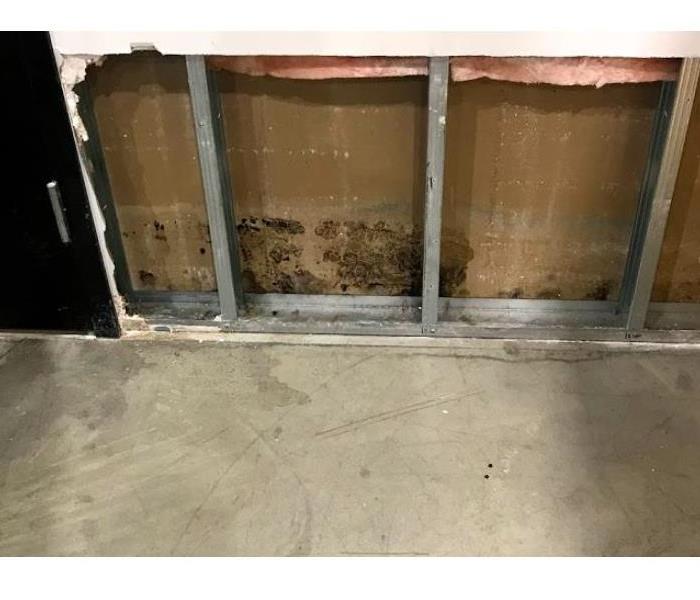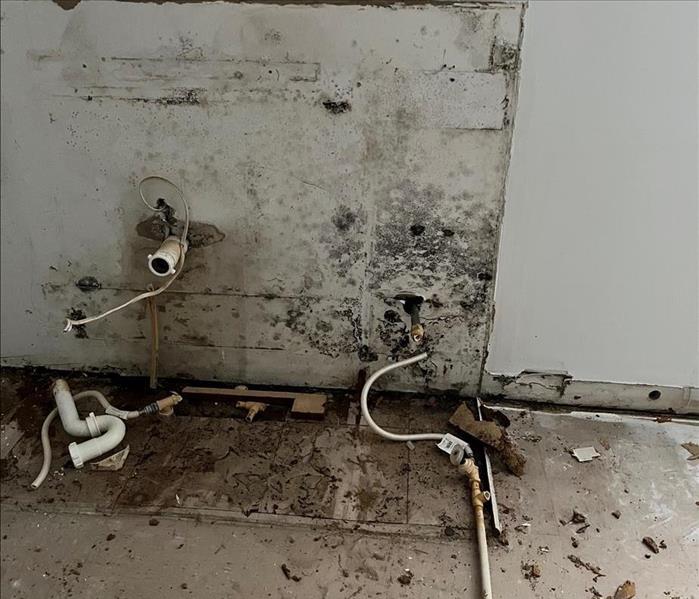Understanding Mold
2/13/2024 (Permalink)
The Silent Invader: Understanding Mold
Mold: it's the word that no homeowner ever wants to hear. Yet, it's a common issue, and understanding it is the first step to winning the battle against this silent invader.
Mold in the Air: The Airborne Truth
One of the lesser-known facts about mold is that it doesn't need direct contact to spread. Mold spores are airborne, which means they can travel through the air, infiltrating your home through windows, doors, or even hitching a ride on your clothing or pets. This makes mold a particularly insidious problem because even the cleanest homes can fall victim to an invasion.
Where Does Mold Grow?
Mold is not picky about where it grows, provided the conditions are right. It thrives in moist, warm environments and can be found anywhere from your bathroom tiles to the corners of your basement. It's not just limited to damp spaces, though. Mold can grow on a variety of surfaces, including fabric, wood, and even paper. And while it might start in an out-of-the-way place, it can quickly spread to more visible areas of your home.
The Speed of Spread
How quickly does mold spread? Faster than you might think. Mold colonies can start to grow on a damp surface in as little as 24 to 48 hours. And once they start, they don't slow down. Given the right conditions, mold will continue to spread and can take over large areas of your home if left unchecked.
Mold Remediation with SERVPRO®
At SERVPRO®, we understand the science of mold and mold growth. Our professionals have the training and expertise to remediate the mold in your home or business. We use advanced mold remediation techniques and equipment to safely handle your mold problem, no matter the size.
We also understand that the best way to control mold growth is to control moisture. That's why we don't just address the mold issue; we also tackle the source of the moisture that allowed the mold to grow in the first place.
Take Action Against Mold
If you suspect that you have a mold problem, don't wait. The faster you act, the quicker you can stop the spread and the damage. Reach out to SERVPRO today for a professional assessment. Our team is ready to provide efficient, effective mold remediation and help you protect your home from this silent but dangerous invader.
Remember, when it comes to mold, you're not alone. SERVPRO is here to help you every step of the way. Contact us today, and let's get your space back to the safe, comfortable, mold-free environment you deserve.
How To Prevent Mold In Your Home
9/10/2019 (Permalink)
 SERVPRO found this mold issue behind drywall due to a leaking water pipe.
SERVPRO found this mold issue behind drywall due to a leaking water pipe.
Just saying the word mold makes people cringe. Some mold can be good but it can also be very bad, especially when it is growing in your home undetected. Mold can grow anywhere, from your carpet to food to paper and also places you may not be able to see such as the backside of drywall, above ceiling tiles or around inside walls that are leaking. A mold problem can be difficult and costly to fix. The best approach to mold is preventing it before it becomes a problem.
- Identify the problem areas in your home and correct them. Even though you can’t completely mold proof your home, you can make it mold resistant. Perform an audit on your home. Find out if you have a leaky pipe causing a water stain or if the basement floods.
- Immediately dry wet areas. Mold can’t grow without moisture, so when you spot wet areas clean it up right away. If you experience a flood, remove any water- damaged carpets, bedding, and furniture if they can’t be completely dried out.
- Have proper ventilation to prevent moisture. Make sure that any in home activity such as cooking dinner, taking a shower, or doing laundry doesn’t invite mold into your bathroom, kitchen, laundry room or any other high-moisture rooms with proper ventilation.
- Install mold-resistant products in your home. If you are building a new home or renovating an old one, look into putting mold-resistant drywall or mold-resistant sheetrock and mold inhibitors for paint.
- Monitor the humidity inside your home. It is recommended by the EPA that you keep the indoor humidity between 30 and 60 percent.
- Direct any water away from your home. Water may collect in your basement or crawlspace if the area around your home isn’t sloped away from the foundation.
- Clean and/or repair your roof gutters. Have your gutters cleaned and inspected for damage regularly.
- Improve the airflow in your home. As the temperature drops, the air is able to hold less moisture. To increase circulation, open doors between rooms, move furniture away from walls and open doors to closets.
If you have a mold issue or have questions regarding mold in your home call SERVPRO of Northwest Columbus and we can send a professional estimator to assist.
Does Your Dublin Home Have A Mold Problem?
6/3/2016 (Permalink)
 In Dublin, mold can spread through a home in as little as 48 hours
In Dublin, mold can spread through a home in as little as 48 hours
Microscopic mold spores naturally occur almost everywhere, both outdoors and indoors. This makes it impossible to remove all mold from a home or business. Therefore, mold remediation reduces the mold spore count back to its natural or baseline level. Some restoration businesses advertise “mold removal” and even guarantee to remove all mold, which is a fallacy. Consider the following mold facts:
Mold is present almost everywhere, indoors and outdoors.Mold spores are microscopic and float along in the air and may enter your home through windows, doors, or AC/heating systems or even hitch a ride indoors on your clothing or a pet.Mold spores thrive on moisture. Mold spores can quickly grow into colonies when exposed to water. These colonies may produce allergens and irritants.Before mold remediation can begin, any sources of water or moisture must be addressed. Otherwise, the mold may return.Mold often produces a strong, musty odor and can lead you to possible mold problem areas.Even higher-than-normal indoor humidity can support mold growth. Keep indoor humidity below 45 percent.If your home or business has a mold problem, we can inspect and assess your property and use our specialized training, equipment, and expertise to remediate your mold infestation.
If You See Signs of Mold, Call Us Today 614-888-5700




 24/7 Emergency Service
24/7 Emergency Service

